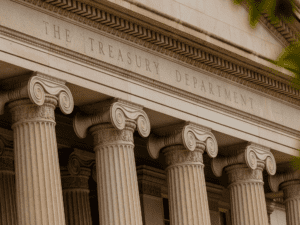As everyone is likely aware, the COVID-19 virus has created a pronounced economic disruption, which has caused a detrimental effect on many companies. As part of the government’s response, the federal government has put together a $2 trillion stimulus package—the biggest economic rescue package in U.S. history. Our team has compiled a comprehensive review of the stimulus package, so you are better able to navigate the new regulations in these trying times.
Within fifteen (15) days of enactment, (March 27, 2020), the Small Business Administration shall issue regulations. These regulations may change or modify the below information.
TITLE I – KEEPING AMERICAN WORKERS PAID AND EMPLOYED ACT
THE PAYCHECK PROTECTION PROGRAM
The Paycheck Protection Program is a modification of the SBA’s 7(a) loan program, in which the SBA partially guarantees loans made by banks to qualifying small businesses. The Paycheck Protection Program modifies the 7(a) loan program in four important ways: (1) expands the businesses that are eligible for loans, (2) modifies the loan terms, including eliminating guarantee and collateral requirements of the borrower, (3) allows all or a portion of the loan to be forgiven if the borrower maintains its payroll, and (4) modifies a number of provisions to incentivize banks to make such loans and make the loan process faster and more efficient.
General Information
- Amount appropriated: $349 billion.
- Loans are made through 7(a) lenders and other lenders.
- Increases SBA guaranty of loans to 100% for the remainder of 2020.
- Grants broad authority to Treasury to approve new lenders who do not make 7(a) loans to make Paycheck Protection Loans and incentivizes banks to make these loans.
- No double-dipping with SBA Economic Injury Disaster Loan (EIDL).
Eligibility
- Any business that employs not greater than 500 employees, or, if applicable, the SBA’s size standard/employees; or
- Sole proprietors/independent contractors/self-employed persons or food service business with multiple locations, but that employ not more than 500 persons per location.
- “Employees” means full-time or part-time.
- The requirement that employers include affiliates is waived for accommodations and food service businesses (so long as there are not 500 or more employees at one location), registered franchisees, small businesses that receive financing through the Small Business Investment Company program.
- Must make good faith certification to the lender that borrower needs the funds to operate because of current economic disruption and will deploy funds for eligible uses.
- Small business was operational February 15, 2020. The covered period is February 15 – June 30, 2020.
Terms
- Borrower must use loan funds to meet payroll costs/cover employee benefits, including commissions or similar compensation; operating costs (e.g., rent; mortgage interest payments; utilities; interest on debts incurred before covered period).
- Only payroll costs of domestic employees earning less than $100k
- Loans are eligible for forgiveness (as described below), but with any unforgiven portion repayable after ten (10) years with an option for deferral.
- No pre-payment penalty.
- Processing fee limited determined by SBA.
- Credit elsewhere requirement is waived.
- Collateral and personal guarantee requirements are waived.
- Maximum loan amount: Lesser of $10M or borrower’s total average monthly payroll for the previous year, excluding comp above 100k/employee, times 2.5, plus the unrealized share of any 7(a) loan already approved under FY20 budget.
- Payroll Period: either February 15, 2019, or March 1, 2019 through June 30, 2019 at borrowers election.
- Otherwise Eligible Businesses: small business not in business during the period above will use a payroll between January 1, 2020 – February 29, 2020, times 2.5, plus the unrealized share of any 7(a) loan already approved under FY20 budget.
- Allows automatic deferments of principal and interest payments for at least six months and not more than one year for all borrowers.
Loan Forgiveness
- Paycheck Protection Loans are eligible for loan forgiveness equal to the amount spent by the borrower during an 8-week period after the origination date of the loan on payroll costs, interest payment on any mortgage incurred before February 15, 2020, payment of rent on any lease in force before February 15, 2020, and payment on any utility for which service began before February 15, 2020.
- If borrower reduces its employee salaries, number of employees, or both during the covered period, then the loan amount available for forgiveness is reduced by the amount of any reduction in:
- Number of Employees
- Calculated by dividing the number of full-time employees (FTE) during the covered period by either (a) average number FTE per month (February 15 – June 30, 2020); or (b) average number FTE per month (January 1 – February 29, 2020).
- For seasonal employees: number of FTEs per month (February 15 – June 30, 2020).
- Salary or Wages:
- Loan amount available/forgiveness is reduced by the amount of any reduction in total salary or wages of any employee during the covered period that is in excess of 25 percent of the total salary or wages of the employee during the most recent full quarter during which the employee was employed before the covered period.
- To encourage employers to rehire any employees who have already been laid off due to the COVID-19 crisis, borrowers that rehire workers previously laid off will not be penalized for having a reduced payroll at the beginning of the period, and the payroll costs of any such employees are eligible for loan forgiveness.
- Borrowers shall apply for forgiveness with the lender directly.
- Limited to the principal amount borrowed.
- Canceled indebtedness is not taxable to the borrower as gross income.
- SBA shall issue regulations governing loan forgiveness within 30 days of enactment.
- Number of Employees
TITLE II – ASSISTANCE FOR AMERICAN WORKERS, FAMILIES, AND BUSINESSES
As businesses look to weather the storm of the current crisis, this provision will allow them to increase liquidity with a reduced cost of capital, so that they are able to continue operations and keep employees on their payroll.
- The provision relaxes the limitations on a company’s use of losses. Net operating losses (NOL) are currently subject to a taxable-income limitation, and they cannot be carried back to reduce income in a prior tax year. The provision provides that an NOL arising in a tax year beginning in 2018, 2019, or 2020 can be carried back five years.
- The provision temporarily removes the taxable income limitation to allow an NOL to fully offset income. These changes will allow companies to utilize losses and amend prior year returns, which will provide critical cash flow and liquidity during the COVID-19 emergency.
- The provision temporarily increases the amount of interest expense businesses can deduct on their tax returns by increasing the 30-percent limitation to 50 percent of taxable income (with adjustments) for 2019 and 2020.
TITLE IV – ECONOMIC STABILIZATION AND ASSISTANCE TO SEVERELY DISTRESSED SECTORS OF THE UNITED STATES ECONOMY
This Emergency Stabilization Fund (ESF) backstops the Federal Reserve’s 13(3) ability, with up to $50 billion, to purchase obligations directly from issuers of such obligations for businesses that have not otherwise received adequate economic relief in the form of loans or loan guarantees.
The Federal Reserve announced its emergency lending authority under Section 13(3) of the Federal Reserve Act to create additional programs to stabilize important financial markets. It announced three facilities: the Primary Market Corporate Credit Facility (PMCCF), the Secondary Market Corporate Credit Facility (SMCCF) and the Term Asset-Backed Securities Loan Facility (TALF).
- In addition to the steps above, the Federal Reserve expects to announce soon the establishment of a Main Street Business Lending Program to support lending to eligible small-and-medium sized businesses, complementing efforts by the SBA.
- Any lending through a 13(3) facility established by the Federal Reserve under this Section must be broad-based, with verification that each participant is not insolvent and is unable to obtain adequate financing elsewhere. Loan forgiveness is not permissible in any such credit facility.
For temporary relief from troubled debt restructurings, the CARES Act provides accounting standards relief for modified loans. This waives the normal application of GAAP for “financial institutions” from March 1, 2020, until the earlier of December 31, 2020, or 60 days after termination of the public health emergency declared on January 31, 2020 for loans modified (that would otherwise be treated as troubled debt restructurings) as a result of COVID-19, and to loan impairments related to such modifications. Note that the term “financial institution” is yet to be defined by Treasury.
The CARES Act also provides optional temporary relief from current expected credit losses under Section 4014(b)(1), whichwaives the normal application of GAAP for “insured depository institutions” from March 1, 2020, until the earlier of December 31, 2020, or the date of termination of the public health emergency declared on January 31, 2020. Note that Congress did not include all non-bank lenders in the final package.



